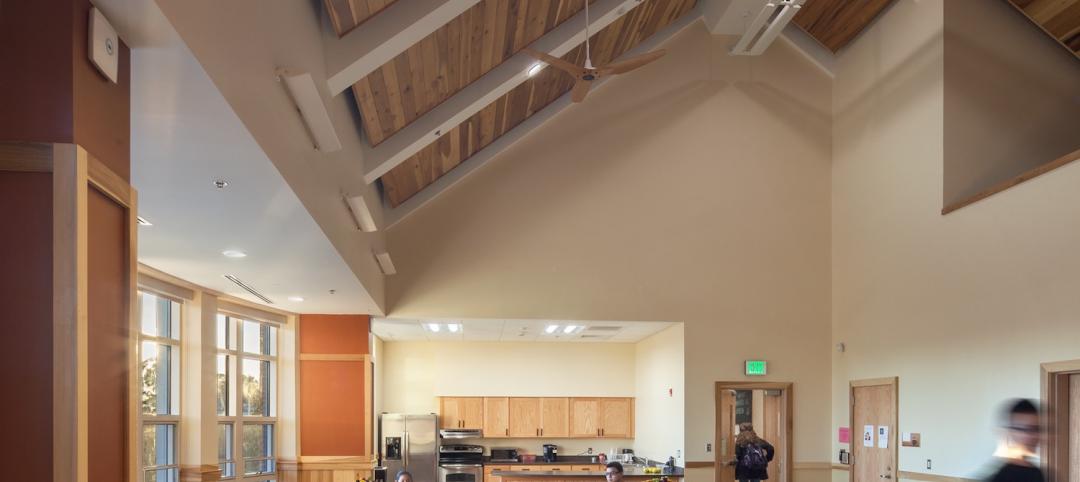The General Services Administration has increased its sustainability requirements and now mandates LEED Gold for its projects.
Previously, the GSA required LEED Silver, but suggested projects aim for Gold certification under the U.S. Green Building Council’s LEED program.
The change was announced by Lace Davis, director of the sustainability office for the GSA, at the Green Legal Matters conference in New Orleans on Oct. 15, and reported in the Washington Business Journal.
However, as noted in the article, the GSA hasn’t updated its material or Website to reflect the change, so questions about the new requirement remained.
BD+C contacted Don Horn, AIA, LEED AP, at the Office of Federal High-Performance Green Buildings, U.S. General Services Administration, and he confirmed the new LEED Gold requirement.
According to Horn: “GSA's Strategic Sustainability Performance Plan released the first week of September includes our new requirement to achieve LEED Gold. An internal memo from Les Shepherd and Bill Guerin, dated 9/24/10, also states the requirement is for new construction and substantial renovation projects.”
*Update* (Nov. 4, 2010)
The GSA has updated its materials and Website. The official announcement.
Related Stories
| Sep 3, 2014
Ranked: Top local government sector AEC firms [2014 Giants 300 Report]
STV, HOK, and Turner top BD+C's rankings of the nation's largest local government design and construction firms, as reported in the 2014 Giants 300 Report.
| Sep 3, 2014
WSP to acquire Parsons Brinckerhoff in $1.35 billion deal
The deal, which has been approved by the boards of WSP and Balfour Beatty, has an enterprise value of $1.243 billion, plus another $110 million in cash retained by PB.
| Sep 3, 2014
The coming architect/engineer brain drain, or 'Curse of the Baby Boomers'
Architecture, engineering, and (presumably) construction firms will face difficulties with management succession, as tens of thousands of Baby Boomers leave the AEC industry. Who will fill the knowledge gap?
| Sep 3, 2014
New designation launched to streamline LEED review process
The LEED Proven Provider designation is designed to minimize the need for additional work during the project review process.
| Sep 2, 2014
Ranked: Top green building sector AEC firms [2014 Giants 300 Report]
AECOM, Gensler, and Turner top BD+C's rankings of the nation's largest green design and construction firms.
Sponsored | | Sep 2, 2014
A smarter way to manage projects
Understanding effective project management helps many big and small organizations to carry out large-scale projects on time, on budget and with lesser commotion.
| Sep 2, 2014
Extreme conversion: 17-story industrial silo to be converted to high-rise housing
As part of Copenhagen's effort to turn an industrial seaport into a bustling neighborhood, Danish architecture firm COBE was invited to convert a grain silo into a residential tower.
Sponsored | | Sep 2, 2014
Judson University’s Harm A. Weber Academic Center resembles copper, but its sustainability efforts are pure gold
The building’s custom-fabricated wall panels look like copper, but are actually flat metal sheets coated with Valspar’s signature Fluropon Copper Penny coating.
| Sep 2, 2014
Melbourne's tallest residential tower will have 'optically transformative façade'
Plans for Melbourne's tallest residential tower have been released by Elenberg Fraser Architects. Using an optically transformative façade and botanical aesthetic, the project seeks to change the landscape of Australia's Victoria state.
| Sep 1, 2014
Ranked: Top federal government sector AEC firms [2014 Giants 300 Report]
Clark Group, Fluor, and HOK top BD+C's rankings of the nation's largest federal government design and construction firms, as reported in the 2014 Giants 300 Report.

















